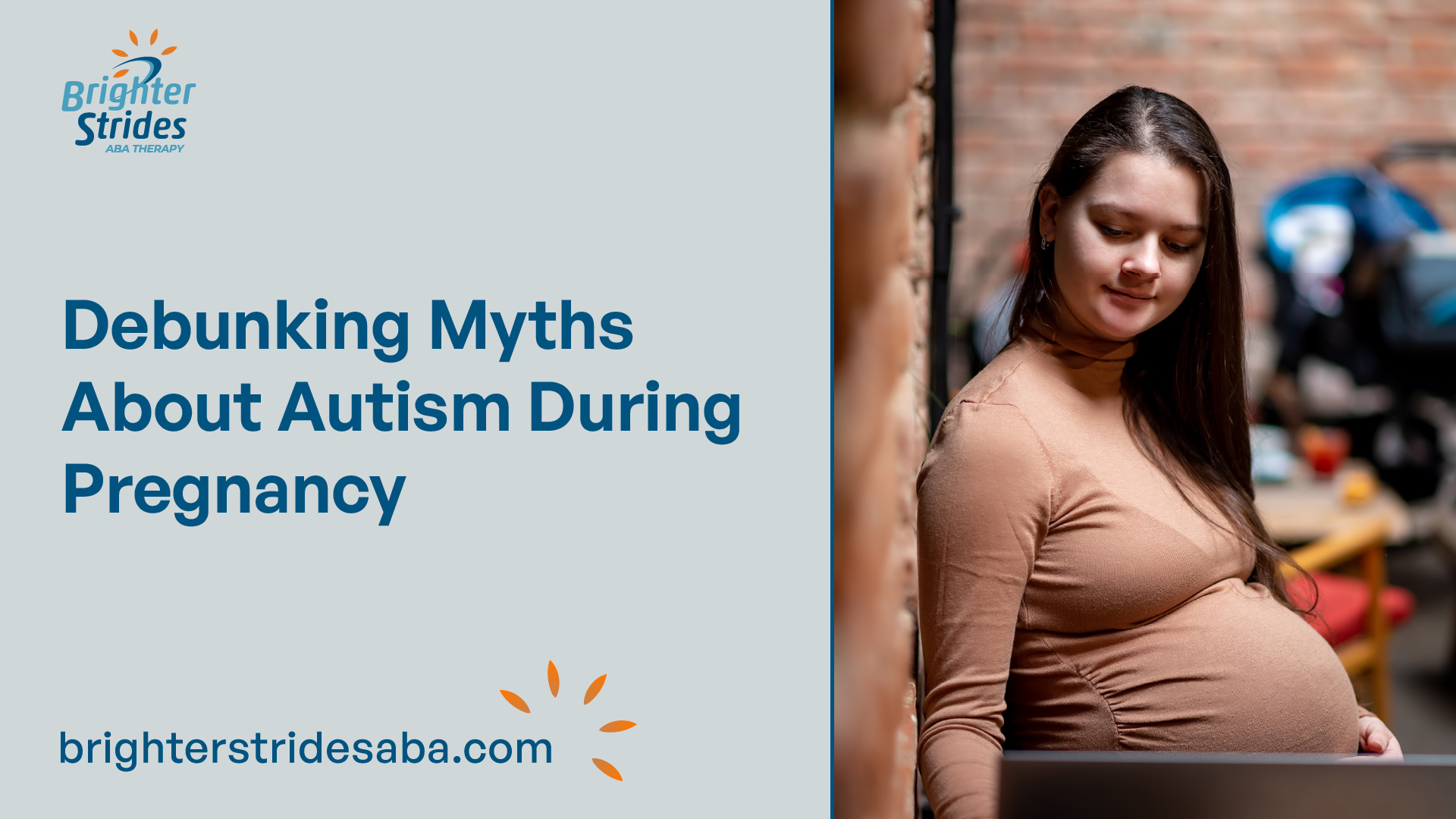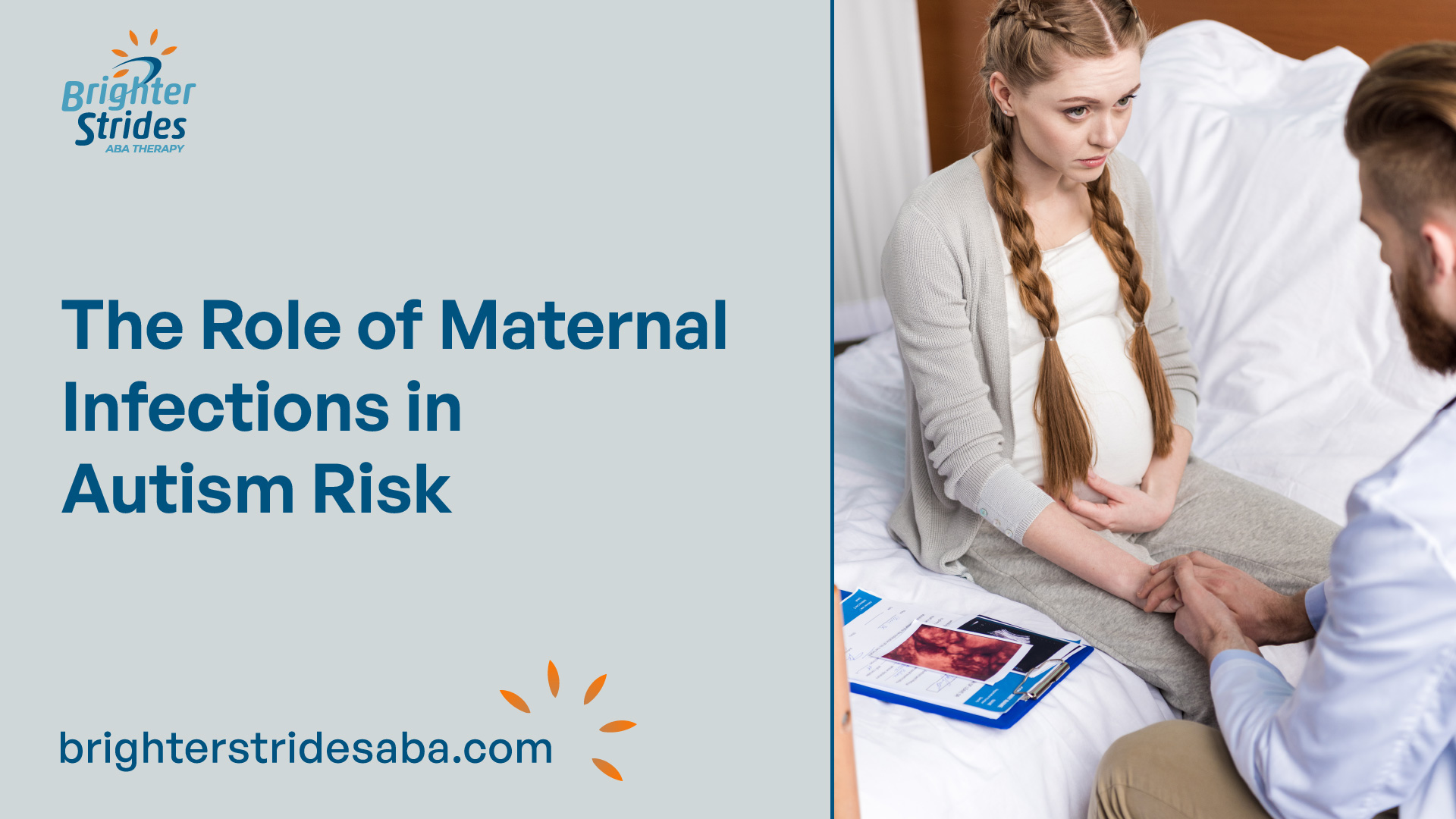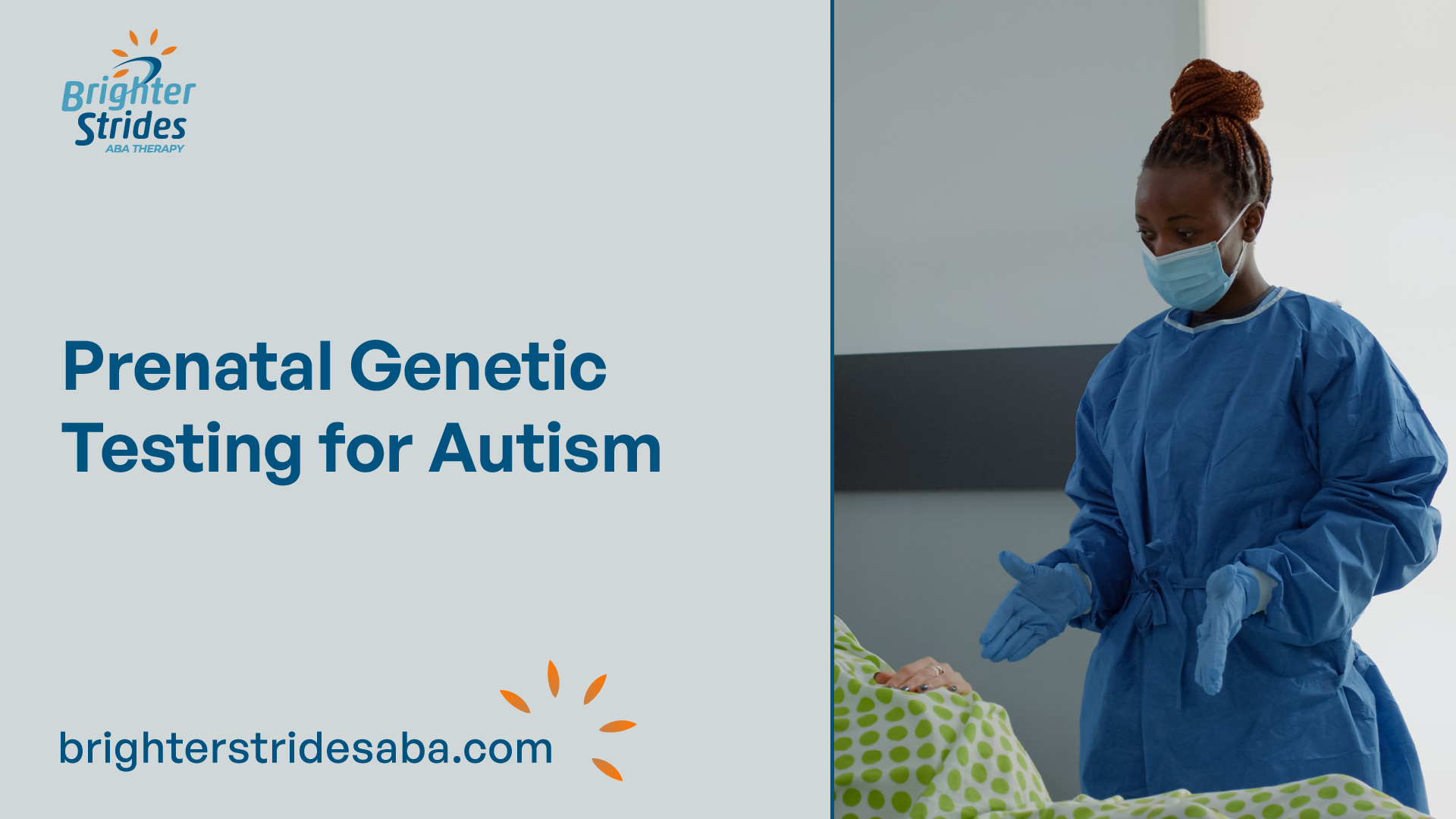
Understanding Autism Spectrum Disorder (ASD)
Autism Spectrum Disorder (ASD) is a neurodevelopmental disorder that affects communication, social interaction, and behavior. Individuals with ASD may have difficulties with verbal and nonverbal communication, social interaction, and exhibit repetitive behaviors or restricted interests. It is important to understand the basics of ASD and the factors that contribute to its prevalence.
What is Autism Spectrum Disorder?
Autism Spectrum Disorder is a complex condition that encompasses a range of symptoms and behaviors. It is characterized by challenges in social communication and interaction, as well as the presence of restrictive and repetitive behaviors. The severity of symptoms can vary widely among individuals, hence the term “spectrum.”
Prevalence and Factors
The prevalence of Autism Spectrum Disorder has been on the rise in recent decades. According to a study published in the NCBI, the prevalence rate of ASD has increased from 1 in 10,000 to 1 in 59 individuals. This rise can be attributed to a combination of factors, including changes in diagnostic criteria, increased awareness, improved access to services, and reduced discrimination against affected families.
Additionally, there are various factors that contribute to the development of ASD. Genetics plays a significant role, with over 200 genes associated with ASD identified thus far. The heritability rate of ASD is estimated to be between 64% to 91%. However, it is important to note that genetic factors alone cannot fully explain the prevalence and complexity of ASD.
Environmental factors also contribute to the risk of developing ASD. Exposure to certain chemicals during pregnancy, such as polychlorinated biphenyls (PCBs) and phthalates, has been linked to an increased risk of ASD in offspring. These findings highlight the importance of creating a safe and supportive environment during pregnancy.
Furthermore, maternal factors, such as maternal infections and nutritional intake, have been studied in relation to ASD risk. Maternal infections during pregnancy and the corresponding immune response have been investigated as potential contributors to the development of ASD. While the research is ongoing, the link between maternal infections and ASD is still being explored.
Higher maternal intake of certain nutrients and supplements, particularly periconceptional folic acid supplements, has been associated with a reduction in ASD risk. However, more research is needed to understand the impact of other maternal nutrients and fats.
Understanding the basics of Autism Spectrum Disorder and the various factors that influence its prevalence is crucial in debunking myths and promoting accurate information about ASD during pregnancy. By exploring the multifaceted nature of ASD, researchers and healthcare professionals can work towards better understanding, early intervention, and support for individuals with ASD and their families.

The Role of Maternal Infections in Autism Risk
Maternal infections during pregnancy have been linked to an increased likelihood of the child developing autism later on. Numerous studies have provided evidence for this association, shedding light on the potential impact of maternal infections on autism risk.
Maternal Infections and Immune Response
When a pregnant woman experiences an infection, her immune system responds by producing inflammatory molecules. These molecules can potentially cross the placenta and interfere with the developing fetal brain. This interference may contribute to the onset of autism in the child.
Various types of infections have been associated with an increased risk of autism in offspring. These include common infections such as the flu, as well as more severe infections like sepsis. Additionally, sexually transmitted infections and urinary tract infections have also been linked to an elevated risk of autism.
Linking Maternal Infections to Autism
The developing fetal brain is particularly vulnerable to the effects of maternal immune activation during the first and early second trimesters of pregnancy, which are critical periods for brain development.
While the exact mechanisms underlying the link between maternal infections and autism are not yet fully understood, research suggests that the inflammatory response triggered by maternal infections may disrupt normal brain development in the fetus. This disruption can potentially contribute to the emergence of autism later in the child’s life.
It’s important to note that while maternal infections have been associated with an increased risk of autism, they are not the sole cause. Autism is predominantly genetic in origin, but the presence of certain prenatal exposures, including maternal infections, may influence the odds of developing autism.
Understanding the role of maternal infections in autism risk is a complex area of study. Ongoing research aims to further elucidate the mechanisms involved and explore potential preventive strategies. By gaining a deeper understanding of these factors, we can better support the health and well-being of both mothers and their children.

Prenatal Exposures and Autism Risk
During pregnancy, various factors can influence the risk of autism spectrum disorder (ASD) in offspring. Two important factors to consider are environmental exposures and genetic factors.
Environmental Exposures and Autism
Exposure to environmental factors during pregnancy, such as chemicals and pollutants, has been associated with an increased risk of ASD in offspring. Common chemicals, including polychlorinated biphenyls (PCBs) and phthalates, have been linked to an elevated risk of ASD development in children. Research suggests that exposure to pollutants during early life, including embryonic development, can influence the risk of developing ASD later in life.
Air pollution, industrial chemicals, and heavy metals are among the environmental factors that have been studied in relation to ASD risk during pregnancy. Pregnant women living in urban areas may have higher exposure to different types of environmental pollutants, potentially increasing the risk of ASD development in their children. Exposure to air pollution, particularly heavy metals and particulate matter, has shown significant increases in ASD risk according to several studies. However, further research is needed to explore the impact of other organic pollutants on ASD risk.
Understanding the influence of environmental exposures on ASD risk during pregnancy is crucial for implementing preventive measures and public health policies to mitigate these risks. It highlights the importance of considering environmental factors as significant contributors to the complex etiology of ASD.
Genetic Factors and Autism
Genetic factors also play a role in the risk of developing ASD. Research suggests that gene-by-environment interactions and epigenetic changes contribute to ASD risk alongside environmental exposures. The interplay between genetic susceptibility and environmental triggers is a complex area of study that requires further investigation.
Genetic variations can influence the vulnerability of an individual to environmental factors, potentially increasing the risk of ASD development. Understanding the genetic underpinnings of ASD can provide insights into the mechanisms behind its development and help identify potential preventive measures.
While environmental exposures and genetic factors are both important considerations in understanding the risk of ASD during pregnancy, it is essential to approach these factors in a comprehensive manner. Further research is needed to unravel the intricate interplay between genes and the environment, shedding light on the complex etiology of ASD and paving the way for effective preventive strategies.
The Impact of Maternal Diabetes on Autism Risk
Maternal diabetes, including type 1 diabetes, type 2 diabetes, and gestational diabetes, has been found to have a significant impact on the risk of autism in offspring. Numerous studies have shown a strong association between maternal diabetes and an increased risk of autism spectrum disorder (ASD) in children.
Maternal Diabetes and Offspring
Research indicates that maternal pre-existing type 2 diabetes is particularly associated with an elevated risk of ASD in offspring. The risk is slightly lower for gestational diabetes, a form of diabetes that occurs during pregnancy. However, both types of diabetes contribute to an increased likelihood of autism in children.
Mechanisms and Risks
The mechanisms underlying the link between maternal diabetes and autism risk are still being investigated. Studies using rodent models of diabetes have shown that offspring of diabetic mothers exhibit autistic-like behaviors, such as reduced ultrasonic vocalizations and impaired social interaction.
One possible explanation is that hyperglycemia, a characteristic feature of diabetes, leads to the generation of persistent reactive oxygen species (ROS) and inhibits the activity of superoxide dismutase (SOD2). These oxidative stress-related factors may contribute to the development of autism-like behaviors in the offspring of diabetic mothers [6].
It’s important to note that while maternal diabetes increases the risk of autism in offspring, not all children born to diabetic mothers will develop the condition. The presence of other genetic and environmental factors also plays a role in the development of ASD. Further research is needed to fully understand the complex interplay between maternal diabetes, genetics, and other contributing factors in autism risk.
Understanding the impact of maternal diabetes on autism risk is crucial for healthcare professionals and individuals planning a pregnancy. By identifying and managing diabetes during pregnancy, healthcare providers can potentially reduce the risk of autism in offspring. Early detection, appropriate prenatal care, and close monitoring are essential in optimizing the health outcomes for both mother and child.
Prenatal Genetic Testing for Autism
Prenatal genetic testing (PGT) for autism is a complex and evolving area of research and discussion. It involves determining what to test, how to interpret the results, and what actions to take based on those results. While PGT offers potential insights into a fetus’s risks for various genetic and genomic disorders, including autism spectrum disorder (ASD), it also raises ethical considerations.
Prenatal Testing Options
Prenatal genetic testing for autism susceptibility genes can be done through procedures like amniocentesis. In Taiwan, for example, PGT via amniocentesis is offered between gestation weeks 16 to 20 to detect a fetus’s risks for various genetic disorders, including ASDs. However, it is important to note that the cost of this test is not covered by the National Health Insurance.
It’s essential to recognize that over 200 genes associated with autism spectrum disorder have been identified, further highlighting the significant role of genetics in the etiology of ASD. However, it’s important to approach prenatal genetic testing for autism with caution and consider the ethical implications.
Ethical Considerations
The topic of prenatal genetic testing for autism raises ethical, legal, and social concerns. One of the primary concerns relates to the termination of affected pregnancies. A study found that approximately two-thirds of participants would undergo PGT to detect ASD susceptibility genes, and more than half of them would consider terminating an ASD-affected pregnancy.
The decision to undergo PGT for autism susceptibility genes is deeply personal and often driven by individual circumstances and beliefs. It is important to approach this decision with careful consideration and seek guidance from healthcare professionals and genetic counselors who can provide comprehensive information, support, and guidance.
Given the complex ethical considerations surrounding prenatal genetic testing for autism, it is crucial to have open and informed discussions about the potential benefits, limitations, and implications of such testing. This ensures that individuals and families can make the best decisions based on their unique circumstances and values.
Environmental Factors and Autism Risk
Environmental factors play a significant role in the risk of developing autism spectrum disorder (ASD) during pregnancy. Understanding these factors is crucial for implementing preventive measures and establishing public health policies. In this section, we will explore two specific environmental factors: air pollution and chemical exposures.
Air Pollution and Autism
Research suggests that exposure to air pollution during pregnancy may increase the risk of ASD development in offspring. Pregnant women living in urban areas, where air pollution levels tend to be higher, may have a higher exposure to various environmental pollutants.
Exposure to pollutants during early life, including embryonic development, can potentially influence the risk of developing ASD later in life. The specific mechanisms by which air pollution affects neurodevelopment are still being studied, but it is believed that oxidative stress, inflammation, and neuroinflammation may play a role.
Chemical Exposures and Autism
Exposure to certain chemicals during pregnancy has also been associated with an increased risk of ASD in offspring. Common chemicals such as polychlorinated biphenyls (PCBs) and phthalates have been linked to an elevated risk of ASD development.
The potential impact of these chemicals on neurodevelopment and ASD risk is an active area of research. It is believed that these chemicals may disrupt normal brain development and function, leading to an increased susceptibility to ASD. However, further studies are needed to fully understand the mechanisms behind these associations.
Understanding the impact of environmental factors, including air pollution and chemical exposures, on the risk of ASD development during pregnancy is essential for implementing preventive measures. Public health policies aimed at reducing exposure to these environmental factors can help mitigate the risk and safeguard the well-being of both mothers and their children.
By considering the complex interplay between genetic and environmental factors, researchers can gain valuable insights into the etiology of autism spectrum disorders. This knowledge can contribute to the development of strategies for early intervention and support for individuals with ASD and their families.
Nutritional Factors and Autism Risk
During pregnancy, maternal nutrition plays a crucial role in the development of the fetus. Several studies have explored the potential link between maternal nutrient intake and the risk of Autism Spectrum Disorder (ASD). Additionally, the impact of smoking and alcohol use on autism risk has also been examined. Let’s delve into these nutritional factors and their association with autism risk.
Maternal Nutrient Intake
Higher maternal intake of certain nutrients, particularly periconceptional folic acid supplements, has been associated with a reduction in Autism Spectrum Disorder (ASD) risk. Folic acid is an essential nutrient that aids in fetal development, particularly in the early stages of pregnancy. It is recommended that women of childbearing age consume adequate amounts of folic acid to reduce the risk of certain developmental disorders, including ASD.
While folic acid has shown a potential protective effect against ASD, more research is needed to examine the impact of other maternal nutrients and fats on autism risk. Further studies are necessary to gain a comprehensive understanding of how maternal nutrient intake can influence the development of ASD.
Impact of Smoking and Alcohol Use
The impact of maternal smoking and alcohol use on the risk of Autism Spectrum Disorder (ASD) has been a subject of study. However, the findings have been inconclusive. Some studies have suggested no significant association between maternal smoking or alcohol use and the risk of ASD. However, it is important to note that more accurate exposure assessment is required to further clarify these associations.
While the research on smoking and alcohol use in relation to autism risk is ongoing, it is generally recommended for pregnant women to avoid smoking and alcohol consumption due to their potential harmful effects on fetal development and overall health. Making healthy lifestyle choices during pregnancy, including avoiding smoking and alcohol, is important for the well-being of both the mother and the baby.
It is important to note that autism is a complex condition with multifactorial causes, and no single factor can be solely attributed to its development. Further research is needed to gain a deeper understanding of the interplay between maternal nutrition, lifestyle choices, and autism risk.
By focusing on maintaining a well-balanced diet, including recommended nutrient intake, and making healthy lifestyle choices, pregnant women can optimize their own health and potentially contribute to a healthy developmental environment for their babies. It is always advisable to consult with healthcare professionals for personalized guidance on nutrition and lifestyle during pregnancy.
Exploring Other Factors in Autism Risk
In addition to the well-studied factors associated with autism risk during pregnancy, there are other factors that researchers have explored to better understand the complex etiology of autism spectrum disorder (ASD). Two such factors are seasonality and short interpregnancy interval, as well as gene-environment interactions.
Seasonality and Short Interpregnancy Interval
Some studies have found an association between the season of birth or conception and an increased risk of autism, suggesting that seasonality may act as a proxy variable for diverse exposures that could contribute to ASD risk. However, the exact mechanisms underlying this association are not yet fully understood.
Short interpregnancy interval, which refers to the time between the end of one pregnancy and the beginning of the next, has also been linked to an increased risk of autism. It is believed that a shorter interval may not provide enough time for the mother’s body to fully recover from the previous pregnancy, potentially impacting the developing fetus.
While these factors have shown some association with autism risk, it is important to note that further research is needed to fully understand their underlying mechanisms and their specific contribution to ASD development.
Gene-Environment Interactions
Autism spectrum disorder is a complex condition influenced by both genetic and environmental factors. Gene-environment interactions play a crucial role in understanding the risk of developing ASD. Environmental exposures during different stages of brain development, including immune dysregulation, oxidative stress, and nutrient deficiencies, may influence the pathogenesis of ASD [3].
Furthermore, exposure to common chemicals during pregnancy, such as polychlorinated biphenyls (PCBs) and phthalates, has been linked to an increased risk of ASD in offspring [2]. Research suggests that exposure to pollutants during early life, including embryonic development, can influence and potentially increase the risk of developing ASD later in life.
Understanding the impact of gene-environment interactions is crucial in unraveling the complexities of autism risk. It highlights the need to consider both genetic susceptibility and environmental exposures when studying ASD development during pregnancy.
As research continues to progress in these areas, it is important to recognize that the field of autism research is dynamic and evolving. By exploring and understanding these other factors in autism risk, researchers can gain valuable insights into the multifaceted nature of ASD and potentially develop strategies for prevention and intervention.
Environmental Factors and Autism Risk
Understanding the potential environmental factors that may contribute to the risk of autism spectrum disorder (ASD) during pregnancy is essential in unraveling the complex etiology of this condition. Several studies have shed light on the impact of various environmental factors on the development of ASD. In this section, we will explore two significant factors: air pollution and chemical exposures.
Air Pollution and Autism
Exposure to air pollution during the prenatal period has been a subject of investigation in relation to ASD risk. Studies have shown that certain components of air pollution, such as heavy metals and particulate matter, may have significant associations with an increased risk of ASD.
It is important to note that the link between air pollution and ASD is complex, and more research is needed to fully understand the mechanisms involved. However, the existing evidence suggests that exposure to air pollutants during critical periods of brain development may play a role in the pathogenesis of ASD. These pollutants may contribute to immune dysregulation, oxidative stress, and nutrient deficiencies, which have been implicated in ASD development.
Chemical Exposures and Autism
Exposure to certain chemicals during pregnancy has also been associated with an increased risk of ASD in offspring. Chemicals such as polychlorinated biphenyls (PCBs) and phthalates, which are commonly found in the environment, have been linked to ASD development.
Research suggests that exposure to these chemicals during early life, including embryonic development, can influence the risk of developing ASD later in life. Pregnant women living in urban areas, where there may be higher exposure to various environmental pollutants, may be at a higher risk of ASD development in their children.
It is important to note that further research is needed to fully understand the extent of the impact of chemical exposures on ASD risk. However, the existing evidence emphasizes the significance of considering environmental factors in the prevention and management of ASD during pregnancy. Implementing public health policies to mitigate exposure to environmental pollutants may help reduce the risk of ASD in offspring.
By exploring the impact of environmental factors, such as air pollution and chemical exposures, on ASD risk during pregnancy, we can gain insights into the complex nature of this condition. It is crucial to continue research efforts to further understand the mechanisms involved and develop preventive measures to ensure the well-being of both mothers and their children.
References
- https://www.ncbi.nlm.nih.gov/pmc/articles/PMC7013751/
- https://www.nature.com/articles/s43856-022-00101-y
- https://www.ncbi.nlm.nih.gov/pmc/articles/PMC3997376/
- https://www.spectrumnews.org/news/the-link-between-maternal-infection-and-autism-explained/
- https://www.spectrumnews.org/features/deep-dive/pregnancy-may-shape-childs-autism/
- https://www.ncbi.nlm.nih.gov/pmc/articles/PMC8902545/
- https://www.spectrumnews.org/features/deep-dive/the-problems-with-prenatal-testing-for-autism/

 We've just released an article!
Check out our blog!
We've just released an article!
Check out our blog!



